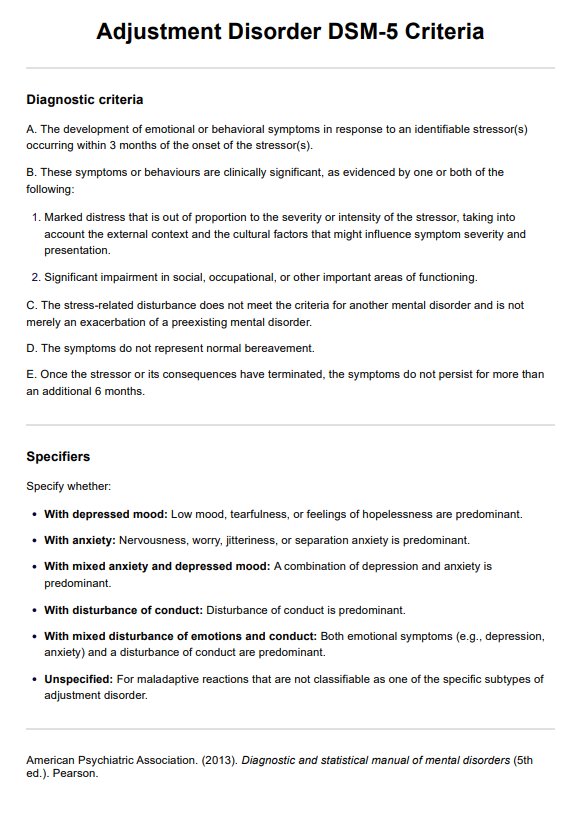F43.22 is the ICD-10 code for Adjustment Disorder with anxiety, a subtype of Adjustment Disorder characterized by nervousness, worry, and jitteriness as predominant symptoms.

Adjustment Disorder DSM 5 Criteria
Explore our Adjustment Disorder DSM-5 Criteria Template for mental health professionals, and provide accurate assessments for your patients.
Use Template
Adjustment Disorder DSM 5 Criteria Template
Commonly asked questions
F43.20 is the ICD-10 code for Unspecified Adjustment Disorder, a category for maladaptive reactions to stressors that don't fit into specific subtypes of Adjustment Disorder.
F43.25 is the ICD-10 code for Adjustment Disorder with mixed disturbance of emotions and conduct, where both emotional symptoms (like depression or anxiety) and behavioral disturbances are predominant.
EHR and practice management software
Get started for free
*No credit card required
Free
$0/usd
Unlimited clients
Telehealth
1GB of storage
Client portal text
Automated billing and online payments











